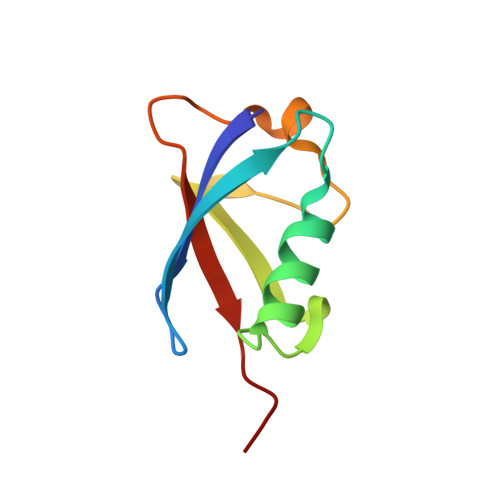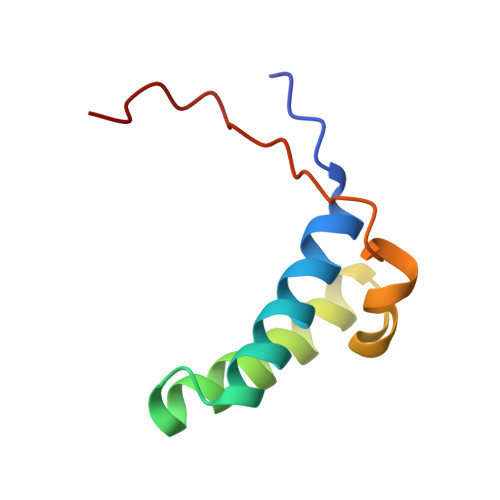Structures of the Sgt2/SGTA Dimerization Domain with the Get5/UBL4A UBL Domain Reveal an Interaction that Forms a Conserved Dynamic Interface.
Chartron, J.W., Vandervelde, D.G., Clemons, W.M.(2012) Cell Rep 2: 1620-1632
- PubMed: 23142665
- DOI: https://doi.org/10.1016/j.celrep.2012.10.010
- Primary Citation of Related Structures:
2LXA, 2LXB, 2LXC, 4GOC, 4GOD, 4GOE, 4GOF - PubMed Abstract:
In the cytoplasm, the correct delivery of membrane proteins is an essential and highly regulated process. The posttranslational targeting of the important tail-anchor membrane (TA) proteins has recently been under intense investigation. A specialized pathway, called the guided entry of TA proteins (GET) pathway in yeast and the transmembrane domain recognition complex (TRC) pathway in vertebrates, recognizes endoplasmic-reticulum-targeted TA proteins and delivers them through a complex series of handoffs. An early step is the formation of a complex between Sgt2/SGTA, a cochaperone with a presumed ubiquitin-like-binding domain (UBD), and Get5/UBL4A, a ubiquitin-like domain (UBL)-containing protein. We structurally characterize this UBD/UBL interaction for both yeast and human proteins. This characterization is supported by biophysical studies that demonstrate that complex formation is mediated by electrostatics, generating an interface that has high-affinity with rapid kinetics. In total, this work provides a refined model of the interplay of Sgt2 homologs in TA targeting.
Organizational Affiliation:
Division of Chemistry and Chemical Engineering, California Institute of Technology, Pasadena, CA 91125, USA.















